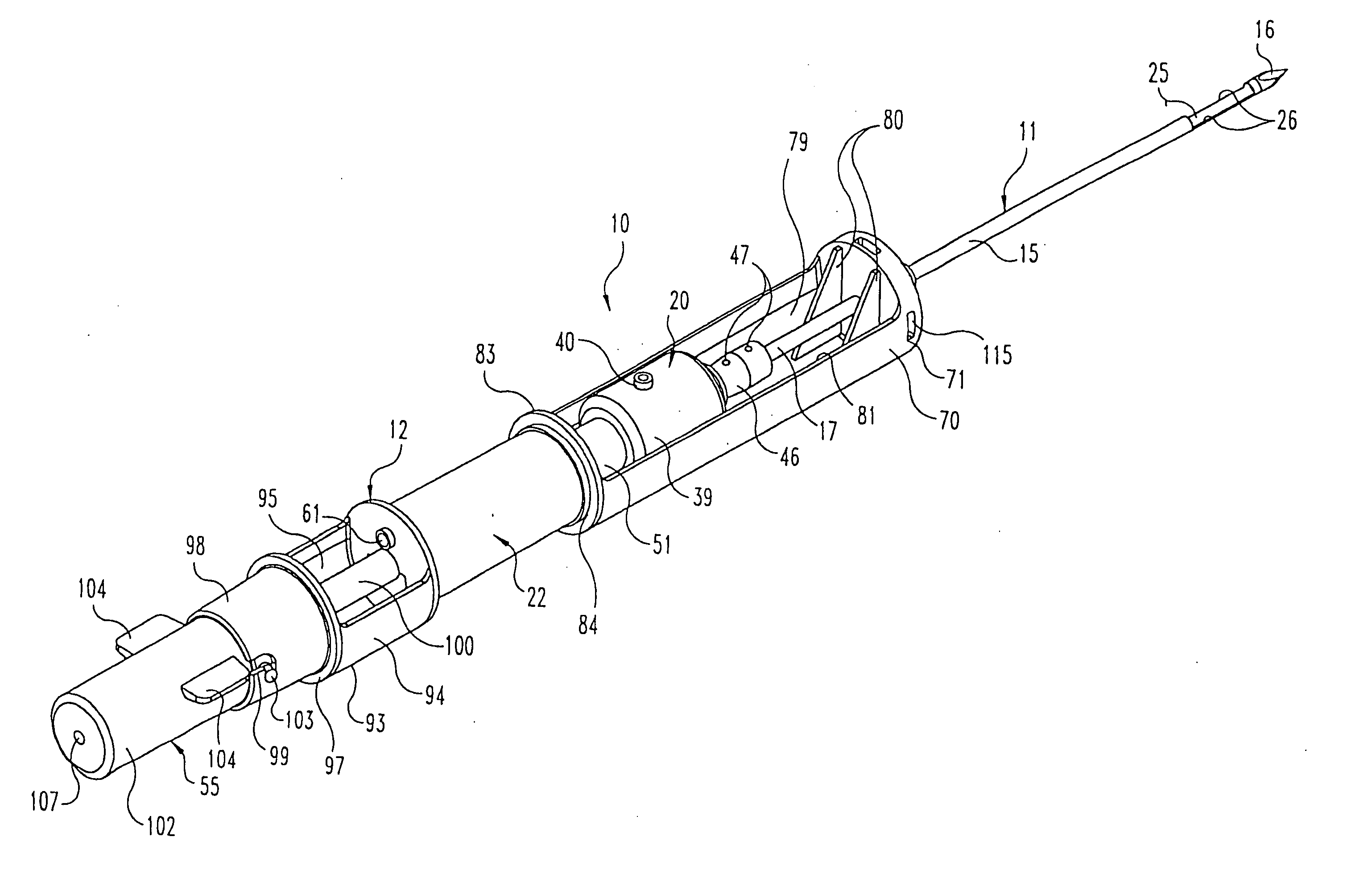Collection filter
a collection filter and filter body technology, applied in medical science, surgery, vaccination/ovulation diagnostics, etc., can solve the problems of increased risk of infection and bleeding at the sample site, significant trauma to the breast tissue, and requiring considerable recovery time for patients, so as to achieve the effect of maximizing the length and overall size of the core, avoiding infection and bleeding, and ensuring the integrity of the longitudinal integrity
- Summary
- Abstract
- Description
- Claims
- Application Information
AI Technical Summary
Benefits of technology
Problems solved by technology
Method used
Image
Examples
example 1
[0110] Eighteen trial biopsies were performed upon patients after obtaining informed consent and preparing the patients according to standard biopsy procedures. In each case, biopsies were performed according to the following procedure. The patient was positioned on her back on the surgical table, and the lesion was located using ultrasound. A small incision was made in the breast. Wile viewing the lesion using ultrasound, an early embodiment of the present invention was inserted into the breast with the tissue receiving opening adjacent the lesion. The cutter was engaged to sample and / or remove the lesion. The lesions varied in size from 6-22 mm. The surgeon's comments are provided in Table 1.
TABLE 1Surgeon's Comments Regarding the Use of EarlyEmbodiments of the Present Biopsy DeviceTrialNumberSurgeon's Comments1Went very well, lesion took approximately 50 seconds togo away2Large fatty breast, very difficult to get needle to mass;eventually successfully removed3Successfully remov...
example 2
[0113] Surgeons performing biopsies using the device of this invention and a device having the features of U.S. Pat. No. 5,526,882 to Burbank provided feedback as to the efficiency of each device. The surgeons' input was used to calculate the amount of time and the number of strokes necessary to remove a lesion. Table 2 compares the amount of time and the number of strokes necessary to remove comparable lesions using each device.
TABLE 2Comparison of Removal Times and Number of Strokes ofthe Present Biopsy Device with the Prior Art DevicePresent Biopsy DevicePrior ArtRemoval Times (sec)Lesion Diameter108050013135845162051280No. of StrokesLesion Diameter101625132742164164
[0114] This data demonstrates that the present tissue biopsy apparatus consistently removes a lesion with fewer strokes and in less time than the prior cutter, the present tissue biopsy device performs 80% faster than the prior cutter, which ultimately results in reduced trauma to the tissue.
PUM
 Login to View More
Login to View More Abstract
Description
Claims
Application Information
 Login to View More
Login to View More - R&D
- Intellectual Property
- Life Sciences
- Materials
- Tech Scout
- Unparalleled Data Quality
- Higher Quality Content
- 60% Fewer Hallucinations
Browse by: Latest US Patents, China's latest patents, Technical Efficacy Thesaurus, Application Domain, Technology Topic, Popular Technical Reports.
© 2025 PatSnap. All rights reserved.Legal|Privacy policy|Modern Slavery Act Transparency Statement|Sitemap|About US| Contact US: help@patsnap.com



